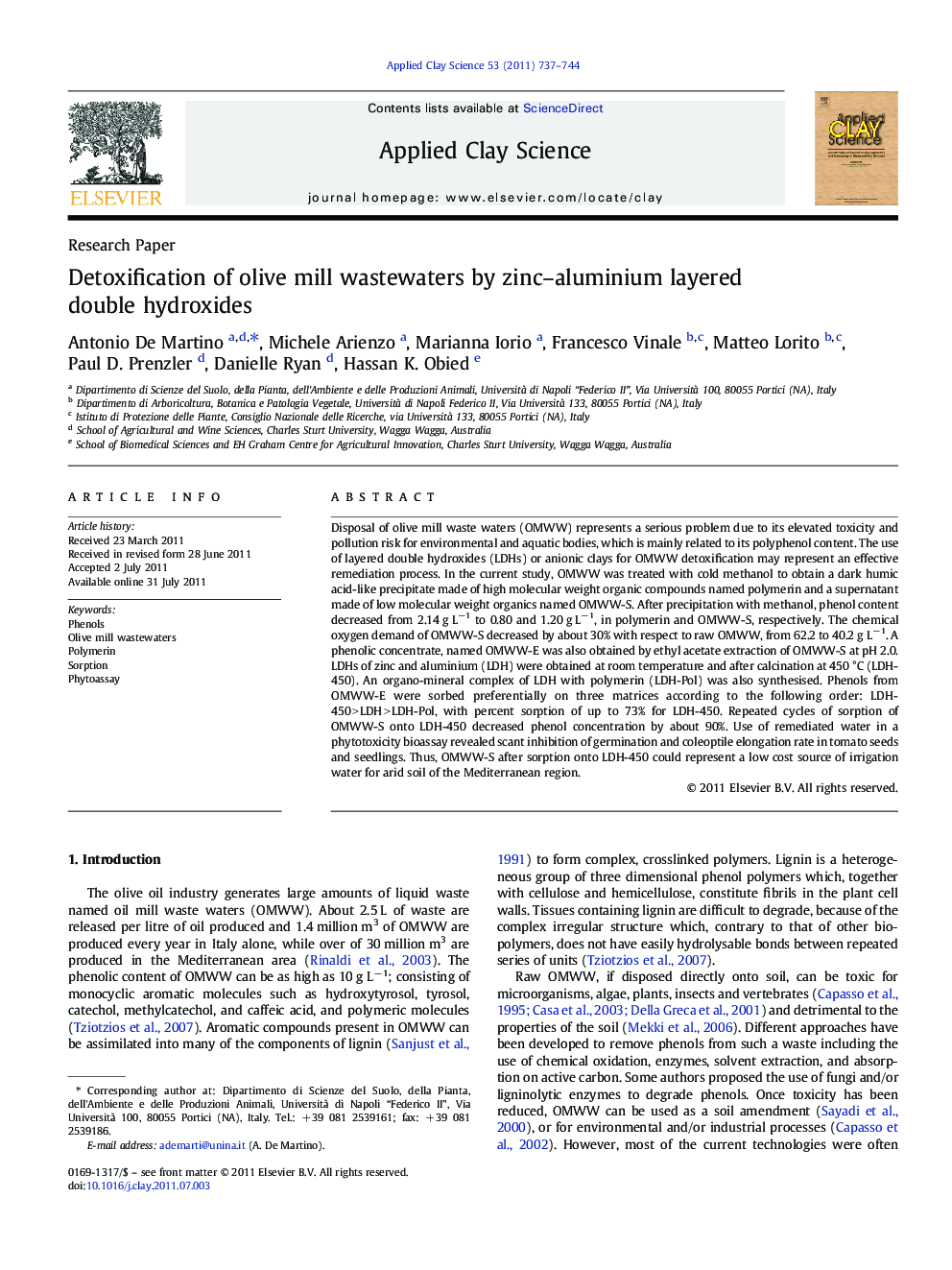| کد مقاله | کد نشریه | سال انتشار | مقاله انگلیسی | نسخه تمام متن |
|---|---|---|---|---|
| 1695435 | 1011859 | 2011 | 8 صفحه PDF | دانلود رایگان |

Disposal of olive mill waste waters (OMWW) represents a serious problem due to its elevated toxicity and pollution risk for environmental and aquatic bodies, which is mainly related to its polyphenol content. The use of layered double hydroxides (LDHs) or anionic clays for OMWW detoxification may represent an effective remediation process. In the current study, OMWW was treated with cold methanol to obtain a dark humic acid-like precipitate made of high molecular weight organic compounds named polymerin and a supernatant made of low molecular weight organics named OMWW-S. After precipitation with methanol, phenol content decreased from 2.14 g L−1 to 0.80 and 1.20 g L−1, in polymerin and OMWW-S, respectively. The chemical oxygen demand of OMWW-S decreased by about 30% with respect to raw OMWW, from 62.2 to 40.2 g L−1. A phenolic concentrate, named OMWW-E was also obtained by ethyl acetate extraction of OMWW-S at pH 2.0. LDHs of zinc and aluminium (LDH) were obtained at room temperature and after calcination at 450 °C (LDH-450). An organo-mineral complex of LDH with polymerin (LDH-Pol) was also synthesised. Phenols from OMWW-E were sorbed preferentially on three matrices according to the following order: LDH-450 > LDH > LDH-Pol, with percent sorption of up to 73% for LDH-450. Repeated cycles of sorption of OMWW-S onto LDH-450 decreased phenol concentration by about 90%. Use of remediated water in a phytotoxicity bioassay revealed scant inhibition of germination and coleoptile elongation rate in tomato seeds and seedlings. Thus, OMWW-S after sorption onto LDH-450 could represent a low cost source of irrigation water for arid soil of the Mediterranean region.
► Layered double hydroxides to detoxify olive oil mill wastewater.
► Wastewater chemically fractionated into a liquid and solid polymeric organic phase.
► From the liquid phase an ethyl acetate phenolic extract was used for sorption.
► Highest removal for calcinated sorbents up to 73% and 90% by repeated removal cycles.
► Low phytotoxicity of the cleaned water.
Journal: Applied Clay Science - Volume 53, Issue 4, October 2011, Pages 737–744